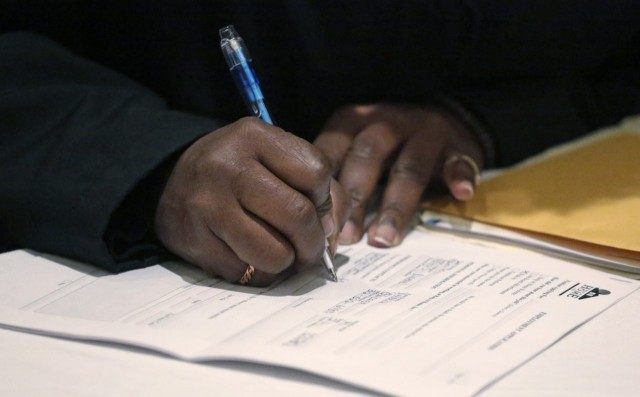Although California’s labor force shrank by 32,000 jobs in September, the Employment Development Department (EDD) in Sacramento claimed a big drop in unemployment claims from 6.1 percent to 5.9 percent.
This confusing “bad is good” result is a consequence of what economists call seasonal adjustments. To account for students going back to school, as well as patterns of expected inclement weather that slow down infrastructure projects in the fall and winter and speed them up in spring and summer, the September seasonal work force trends resulted in a 125,000 drop in available workers in the labor force for the month.
That explains why it only took adding about 8,000 jobs in September to knock California unemployment down by what will probably be a nation-leading two tenths of a percent. Although still much higher than the 5.1 percent national average, the last time California’s unemployment rate has been that low was November 2007.
California suffered tremendously in the Great Recession, with unemployment hitting 12.4 percent in December 2009, versus a national average of about 10 percent. Personal and business bankruptcies rose by 58 percent and the state’s powerful export economy plummeted by 23 percent. When part-time and discouraged workers (who have stopped looking for work) were added to unemployment, California won the booby-prize as the worst state in the nation with an “ under-employment ” rate of 18 percent.
But over the 12 months through August 2015, California led the nation with 470,000 new jobs, according to the U.S. Bureau of Labor Statistics. The tech-heavy San Francisco Bay Area has remained strong, but the Los Angeles Basin and San Bernardino County contributed over half of the state’s job growth.
Because California is the highest taxed state and has the most generous welfare system in the nation, the state exports rich people tax payers and imports illegal/undocumented welfare cases. This combination makes it difficult to estimate how many people are actually working, since a huge piece of the state’s economy operates on a cash basis to avoid paying taxes and reporting too much income to qualify for welfare benefits.
According to the latest data available, the Heritage Foundation documented that California actually had 3.7 percent of its domestic population migrate to other states over the decade through 2013, with most moving to states with tax rates that are half or less than that of California.
California politicians used to focus on spending on the middle class. But since Jerry Brown was elected in 2010, the state’s middle class has shrunk from 46.7 to 43.5 percent of the population. Average incomes by 2013 had fallen by $5,255, and those spending at least 30 percent of income on housing leaped by 20 percent to 44 percent of state residents.
The main reason for the California middle class’s collapse is the state is now home to more than 12 million immigrants, about one in four of the foreign-born population nationwide. Half of the children in California had at least one immigrant parent, with about 57 percent Mexicans, 23 percent from another Latin American country, 10 percent from Asia, and only 5 percent from Europe and Canada.
The Department of Commerce’s National Bureau of Economic Research (NBER), in a report titled “Immigrants Tend to Live in High Welfare Benefit States,” documents that by offering the nation’s richest welfare benefits, California is part of “a ‘striking and easily observable clustering of immigrants in high-benefit states.’” As California rose from offering medium benefit levels in 1970 to “almost the most generous [benefits] in the nation” by 1990, the benefit levels served as a “magnet” for less-educated immigrants.
Starting from a very high level of unemployment, California has been on a job boomlet over the last two years. The latest numbers seem to indicate the trend is continuing.

COMMENTS
Please let us know if you're having issues with commenting.